The historic symbolism of snake jewelry continues to have modern appeal, says estate dealer Beverley Forward.
What is the draw of antique snake jewelry for modern collectors?
Antique snake jewelry can be found in both the Georgian and Edwardian periods. It was in the Victorian period, however, after Prince Albert proposed to the future Queen Victoria with a serpent engagement ring, that it became particularly popular. When the newly crowned Victoria opened her first session of the English Parliament, she wore a snake bracelet, reinforcing the idea of wearing serpent-themed jewelry in all its different forms. Each of the periods is very collectible, as most antique serpent jewelry was handmade, and each piece has its own uniqueness.
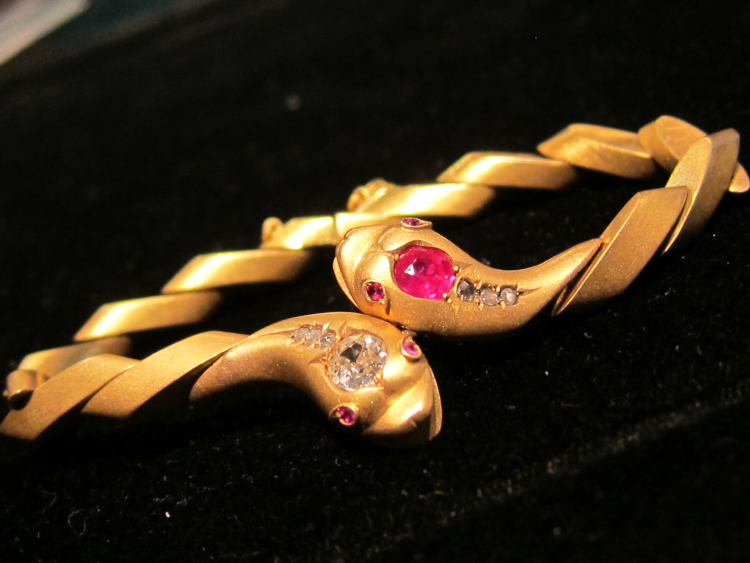
What are the most widespread interpretations of the motif?
Unlike many other animal shapes, the flexibility and flowing movement of a snake could be made into many different designs, encompassing all the different jewelry forms from bracelets to rings, necklaces and pendants, earrings and brooches. Most snake jewelry had the tail of the snake attaching to the head in a circular loop, signifying continuity, timelessness and eternity, with no beginning or end. It was considered a very romantic piece of jewelry to give someone — the equivalent today of giving someone a piece of heart jewelry. Serpent jewelry was also worn as protection from disease. In addition, the serpent was seen as symbolic of fertility.
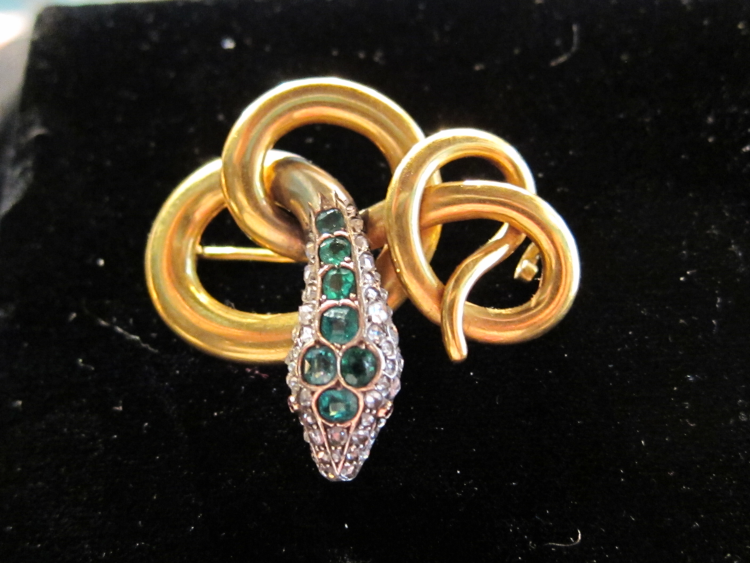
Which materials and gems were particularly popular?
Snake jewelry, especially rings, was mainly made of high-karat gold, with some pieces done in sterling silver for more limited budgets. If it was for general wear, many different gemstones and enamel colorings were used. But if given as an engagement ring, then it was mainly one gemstone or a combination of the four most precious gemstones, all of which had their own symbolism. Many believe Prince Albert chose emerald for Victoria’s ring because it was symbolic of infinite patience, integrity and loyalty — the gemstone meant to keep partnerships in balance — [and that he paired] it with diamonds [to symbolize] purity, innocence, love and fidelity. Also popular choices in serpent engagement rings were sapphires, symbolic of wisdom, learning, integrity and the preserver of chastity, and rubies, which Albert chose for the eyes of the snake in Victoria’s ring, symbolizing purity and passion.
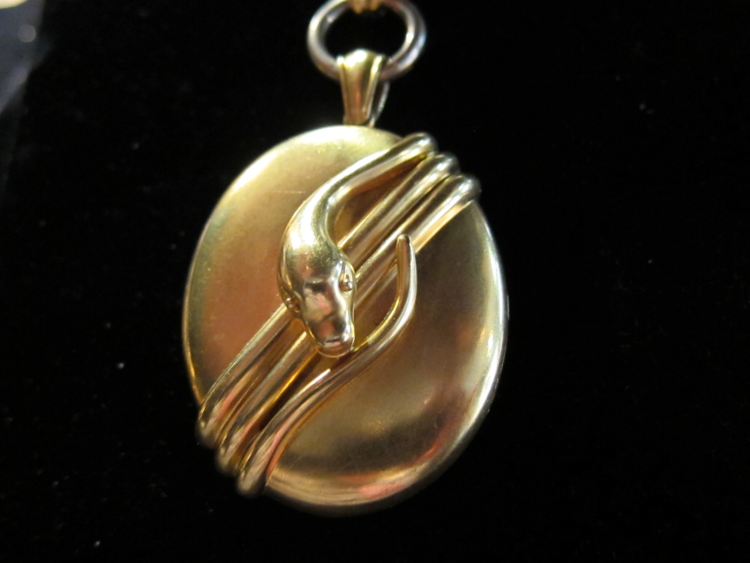
What is the availability of antique snake jewelry?
It is still possible to find, but it is becoming harder and harder. Of all the animal jewelry made in the 1800s and early 1900s, there was more snake jewelry produced, which gives people more of a selection. In choosing pieces, the first thing to check is condition: Is there any damage? Are there repairs? Is there any wear on the piece? This is especially important with earlier pieces. Expect to see some wear on a piece over 100 years old; otherwise, there is a strong possibility it is a reproduction. But the piece should not be too fragile to wear. If customers intend to wear the jewelry, it needs to be tried on to see how it lies, especially the length of a necklace or the width of a bracelet, as many of the earlier pieces can be on the shorter side.

WHO IS BEVERLEY FORWARD?
Beverley Forward and her husband Stephen own Beverley R Jewelry in Chicago, Illinois, where they offer fine antique and period jewelry from the early 1800s through the 1950s. In the business for over 30 years, she is an expert in jewelry periods and settings, and he is a gemologist who passed the Gemmological Association of Great Britain (Gem-A) exams for diamonds and colored gems.
Left image: Beverley Forward. Photo: Beverley Forward.
Main image: Opal and diamond necklace in 18-karat gold, c. 1890. Photo: Beverly R Jewelry.

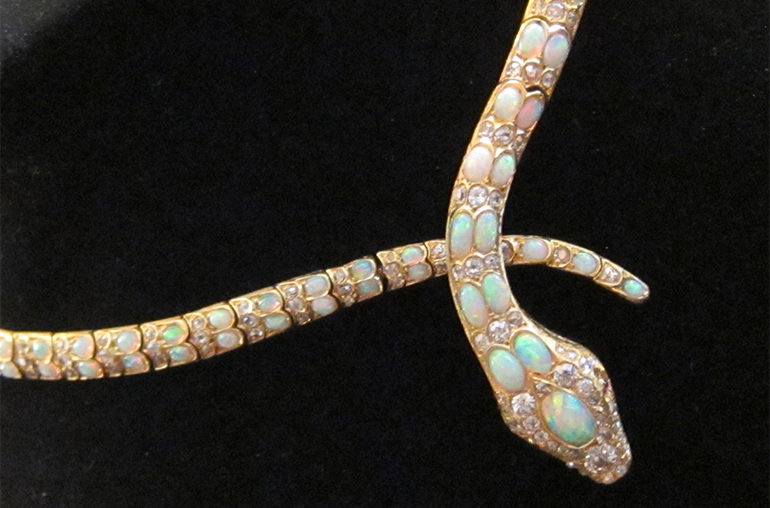
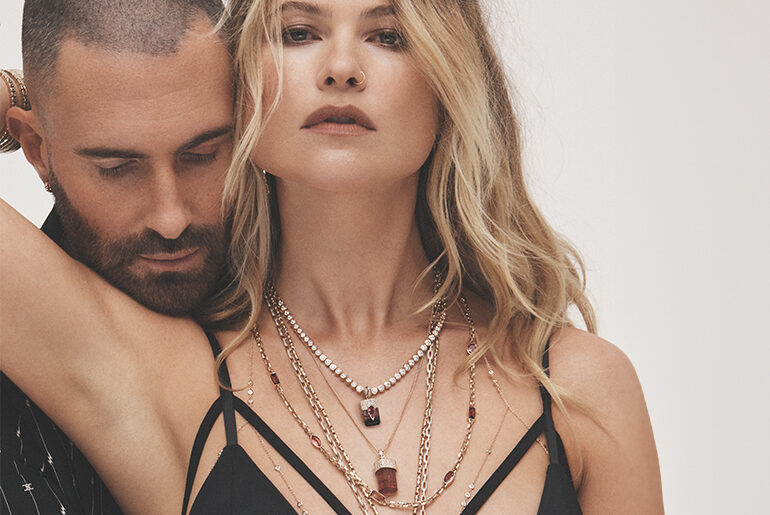
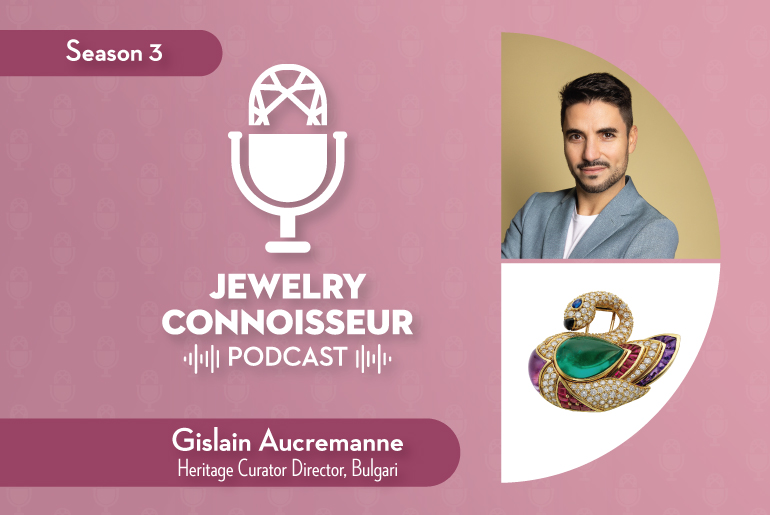
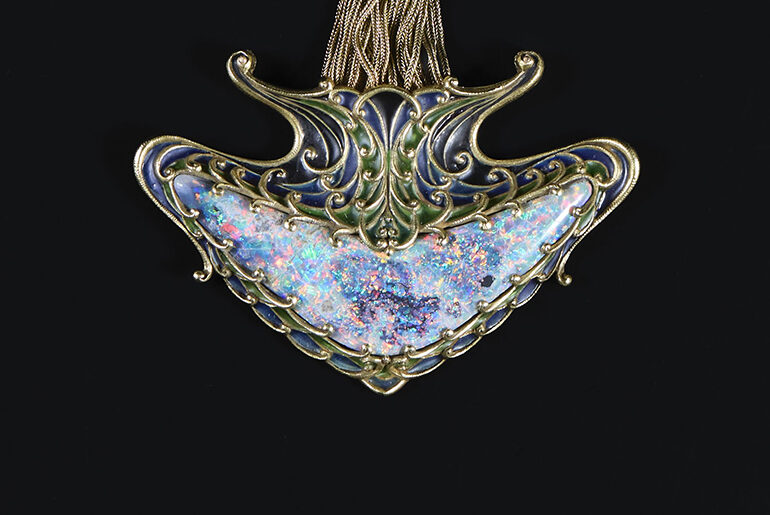
6 Comments
You made some decent points there. I did a search on the subject and found most people will agree with your blog.
Thank you for sharing with us, I believe this website truly stands out : D.
I haven’t checked in here for some time because I thought it was getting boring, but the last several posts are great quality so I guess I will add you back to my daily bloglist. You deserve it my friend 🙂
Attractive section of content. I simply stumbled upon your blog and in accession capital to claim that I acquire in fact loved account your blog posts. Anyway I will be subscribing on your augment or even I fulfillment you get admission to constantly fast.
I am continuously searching online for ideas that can assist me. Thank you!
This is a very good tips especially to those new to blogosphere, brief and accurate information… Thanks for sharing this one. A must read article.